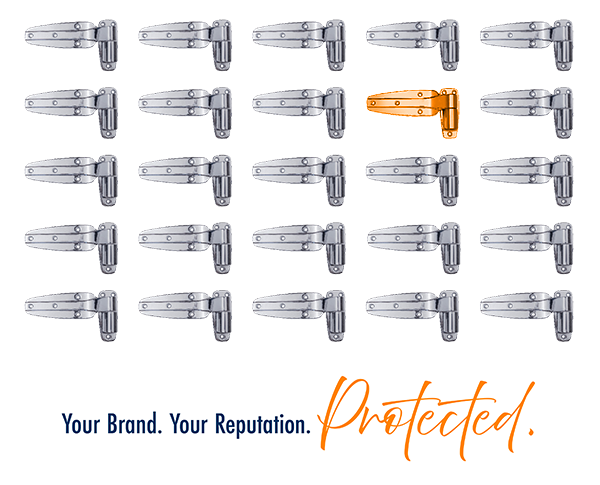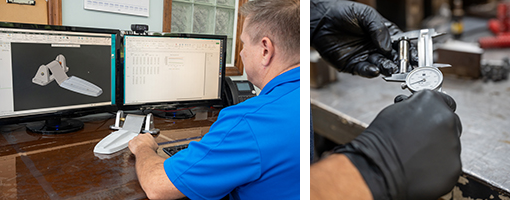Kason Industries: Protecting What Matters
For nearly 100 years, Kason has set the standard for hardware you can trust. Counterfeit products threaten that
legacy—and your reputation. Every part you specify, buy, or install should be genuine Kason. This page shows the risks of counterfeit hardware and how to identify authentic Kason products, so you get the quality, precision, and reliability you expect.
Can You Spot the Counterfeit?
Counterfeits copy the look of genuine Kason hardware, but they can’t copy the quality Can you spot which product is real and which is counterfeit?

Genuine vs. Counterfeit - How to Tell the Difference

Markings Matter
Genuine Kason parts feature crisp logo and part numbers. Counterfeits often have missing or distorted markings.
Clean Casting
Authentic Kason hardware has smooth, uniform surfaces. Fakes show rough or uneven finishes and poor detail.
Consistent Finish
Real Kason parts use high-quality materials and plating for a bright, even appearance. Counterfeits can often look dull or discolored.
Fit & Detail
Genuine components align precisely. Counterfeits may show gaps, misaligned parts, or uneven bushings.
Counterfeits Hurt Everyone

Trust is earned, not copied.
Every genuine Kason® part is engineered for safety, strength, and reliability. Counterfeits put your customers, your reputation, and your bottom line at risk.
Who's at Risk and Why it Matters
OEM/Distributor
- Every hinge or latch with your brand carries your reputation.
- Counterfeits compromise your builds, margins, and name.
- Failures mean downtime, added labor, and warranty claims.
Specifier/Designer
- Every specification you approve carries your accountability.
- Counterfeit hardware breaks documentation and compliance chains.
- Genuine Kason products provide full traceability and verified documentation.
End-User/Owner Operator
- Your equipment must perform every shift, every day.
- Counterfeit parts cut corners on materials, finish, and strength.
- Failures mean lost trust, reduced productivity, and safety risks.
